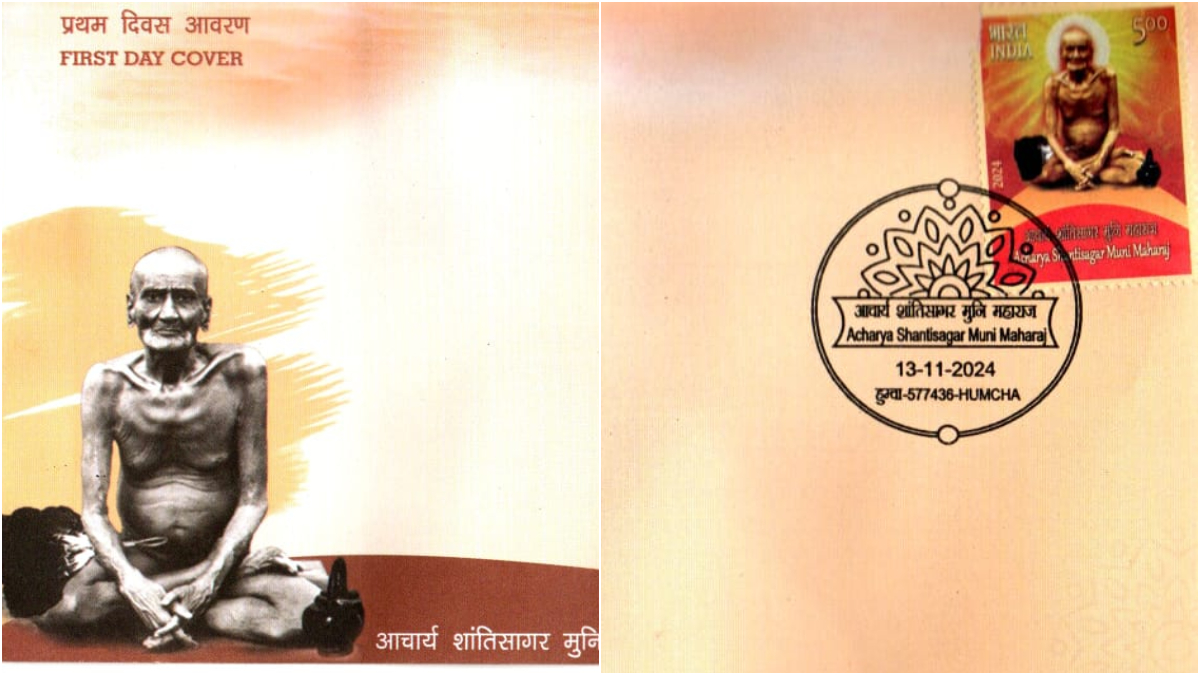Mumbai: The Department of Posts released a stamp this week to commemorate the life and teachings of Jain saint, Acharya Shantisagara, who played a pivotal role in revitalising the Digambara Jain ascetic tradition.
Acharya Shantisagara was born in 1872 in a village in what is now Karnataka’s Belgaum district. He was initiated into an ascetic’s life by his spiritual teacher, Devendra Kirtiji Maharaj.
Acharya Shantisagara is believed to have walked nearly 35,000 miles during his lifetime, meeting followers and spreading his teachings. When he passed away in 1955, the then President of India, Dr S Radhakrishnan, described him as ‘a prince among ascetics’.
A learned seeker, Acharya Shantisagara is revered by Jains for his profound asceticism, unwavering self-control and incredible penance, said Jain scholar M.sh Modi.
“He established standards of appropriate ascetic conduct that remain unsurpassed to this day. His charismatic presence and inspiring personality inspired several generations of Jains to follow in his footsteps. His exemplary conduct, modesty, simplicity, and clarity of thought have left an indelible mark on the Jain community,” said Modi.
“Prior to their efforts, the Jain Dharma, sacred spaces, and scriptures were safeguarded by the Bhaṭṭarakas in the Digambara tradition and by the Yatis in the Śvetāmbara tradition. Acharya Shantisagara’s tireless work re-established the presence and free movement of Digambara Jain monks and nuns across India,” added Modi. The word ‘Digambara’ means sky-clad and monks from this order abandon all worldly possessions, including clothing.
The postage stamp was released in Humcha, Karnataka, on November 13, by the Department of Posts and the Shree Kshetra Hombuja Jain Math, Shivamogga, Karnataka. Jains said that this gesture is a testament to and a celebration of Acharya Shantisagara’s impact on Indian society. He was a man of great conviction and his legacy continues to guide the Jain community at large.
Acharya Shantisagara’s biography, ‘Cāritra Cakravartī’, written by Pandit Sumerchandra Divakar, offers a fascinating glimpse into his life and teachings.

